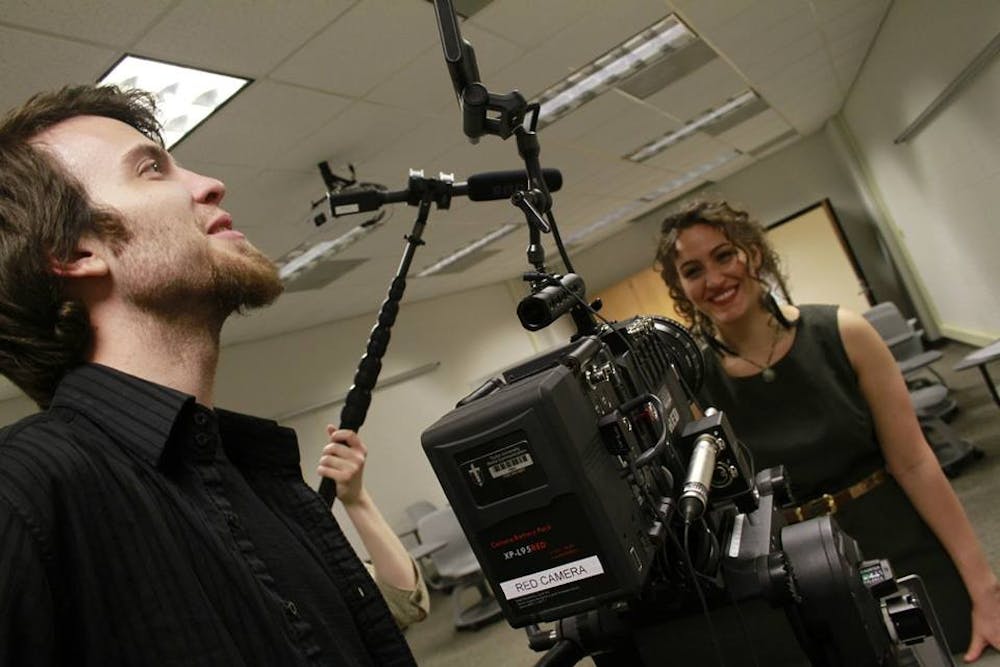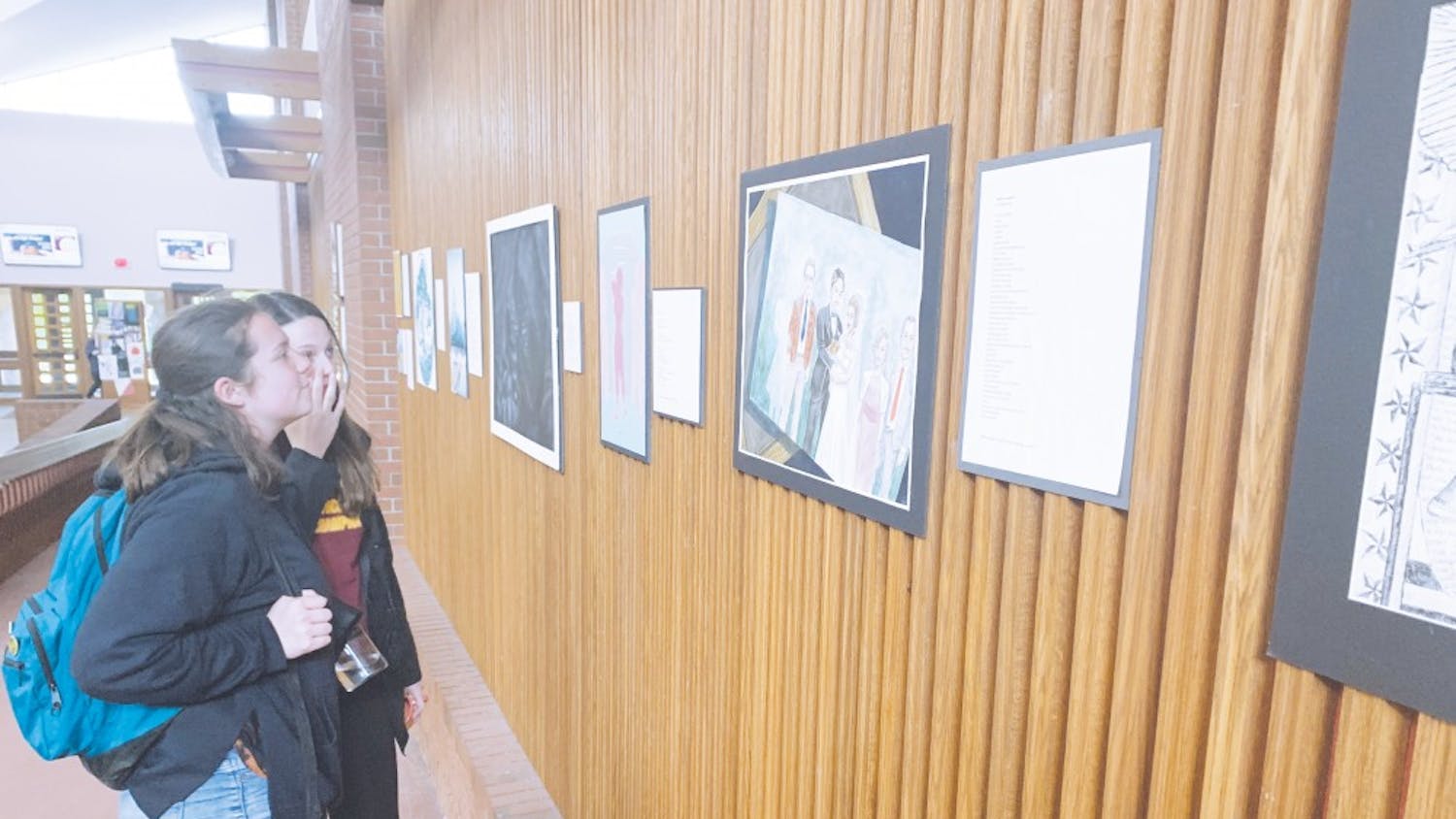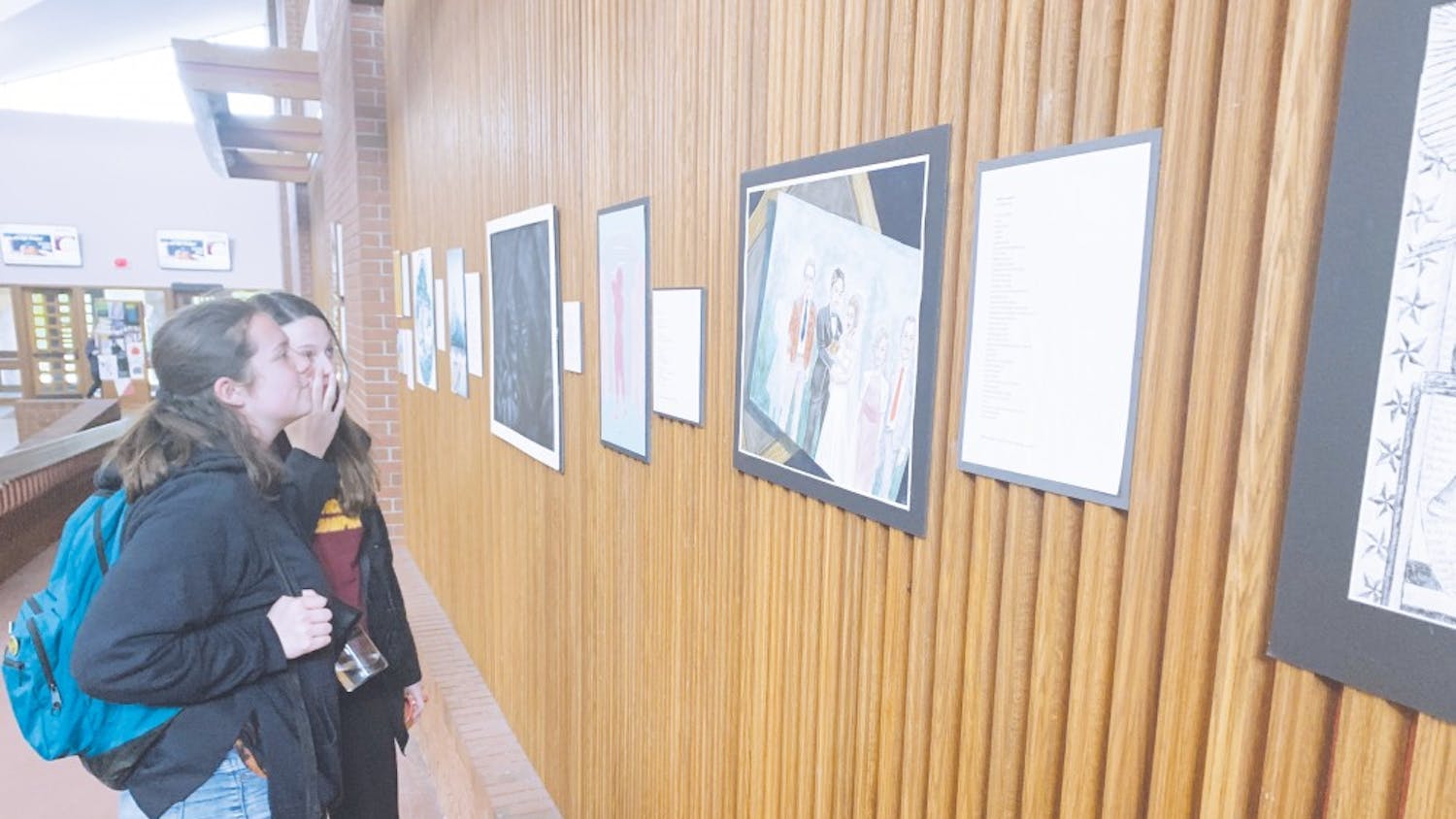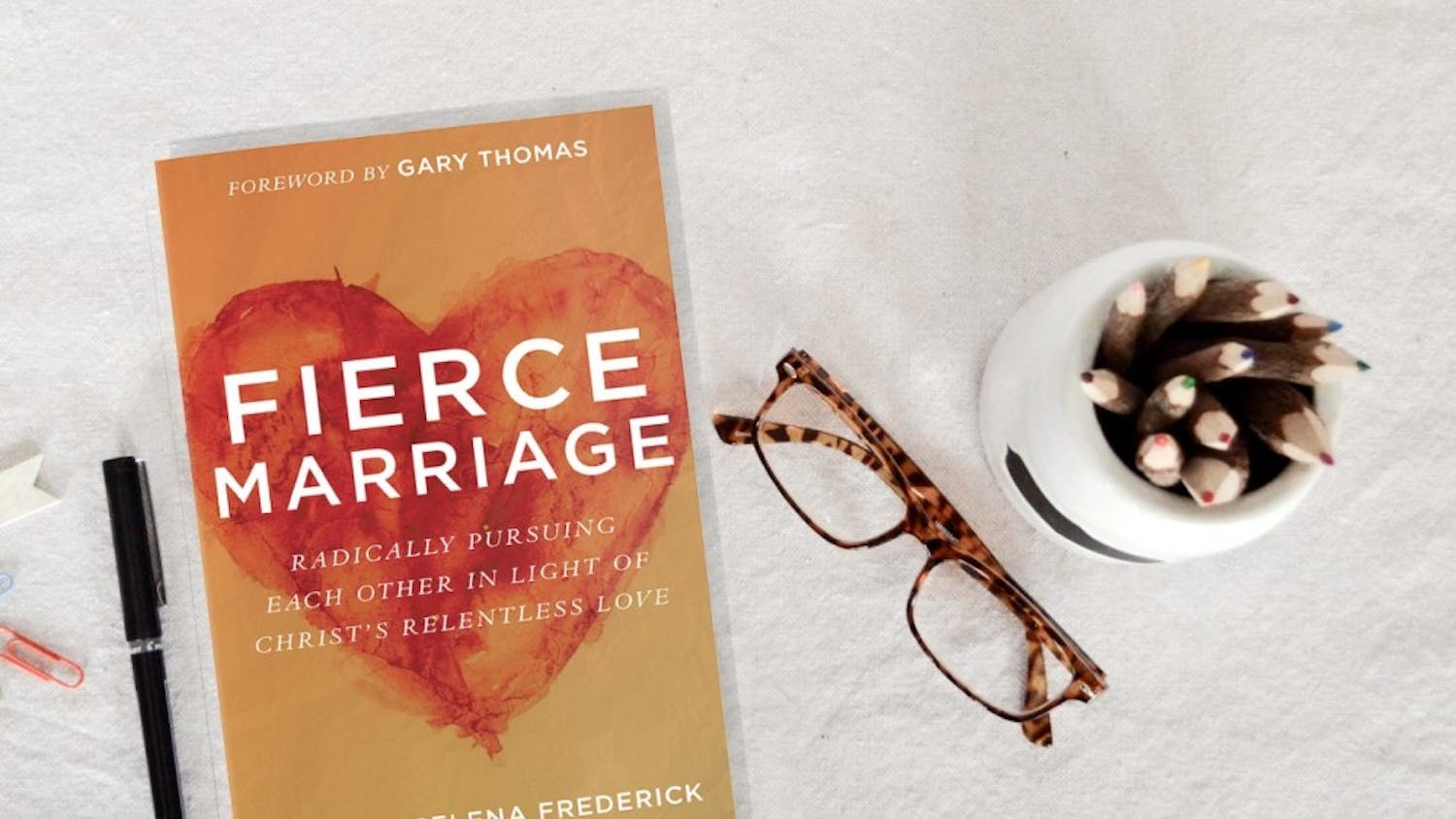By David Seaman | Echo
The students in the Narrative Filmmaking class will watch their films play for a large audience this Saturday. There will be no more all-nighters, no more color correction, no more audio sweetening or last-minute editing. These hard-working students will present their visions to the crowd and hope their films are selected for Taylor's prestigious Envision Film Festival next March. Here are the films these seniors have put blood, sweat, tears and digital battery life into, all being presented for free admission on Saturday, May 17 at 7 p.m. in Rediger Auditorium.
"Burnout"
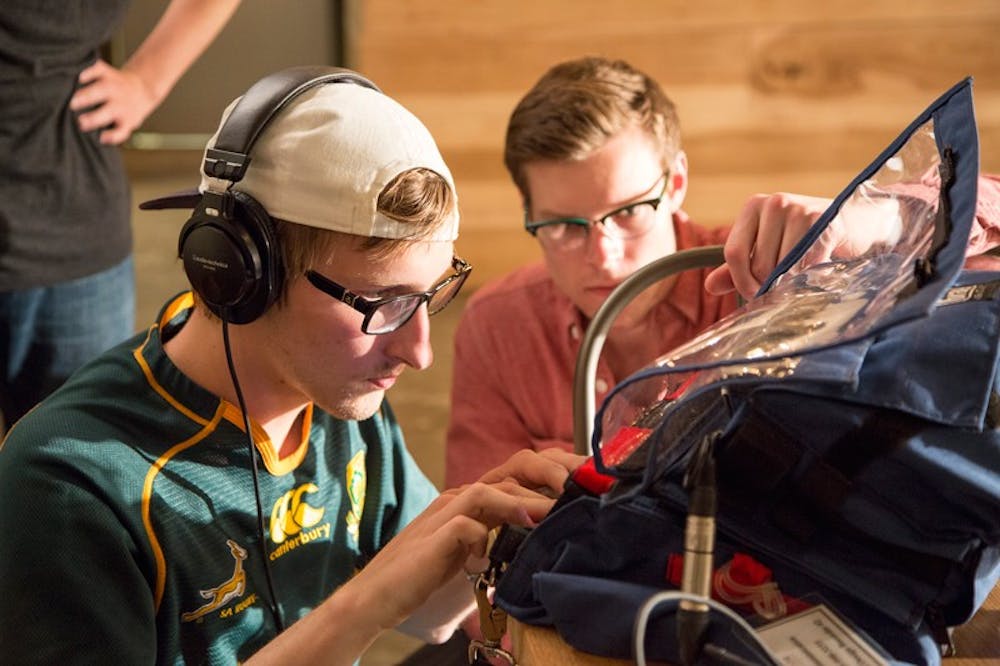
Hanging lights illuminate the coffee shop. The warm, expansive atmosphere overtakes the two characters as they enter. They are alone in this place, the perfect area to talk. One offers to buy coffee, while the other hesitantly accepts. They sit down and begin their argument.
The scene is from "Burnout," the narrative film of scriptwriter/director Dan Morton, cinematographer David Perkins and producer Nathan Pfaff. Borrowing thematic elements from the Coen Brothers' hit "Inside Llewyn Davis" and Oscar-winning short "Curfew," the film tells the story of Nick and Natalie, played by senior Chase Geyer and junior Lexie Owen. Nick is a washed-up med school dropout who scrapes by at his job at a local bowling alley, trying to convince himself that he'll go back to school someday. When he witnesses regular customer Natalie having a fight with her fiancé he tries to comfort her. In order to fully help her, however, Nick must confront his own personal issues.
"His whole life is basically burnt out, and he has no motivation," Geyer says. "He's basically Charlie Brown. And in this story Charlie Brown grows up."
The plot is simple, but Nathan Pfaff thinks "Burnout" will be relatable to audiences.
"We wanted to portray something very realistic; a window into a character whose experiences represent the lives of a lot of people around us," he said. "It is a portrayal of stagnancy and rejection that might help us understand and overcome the potential of these problems in our own lives."
Cinematographer David Perkins is using the high-quality RED Epic cameras, which all of the narrative filmmakers are using, to the fullest of its many capacities. By filming in places with haze and smoke he hopes to create impressive three-dimensional images that pop out from the screen.
Even with an impressive script and excellent film equipment, there have been some problems along the way. The group had to spend three days recreating their editing timeline because the software used couldn't handle the type of audio file they recorded. A woman disrupted the coffee shop scene with strange ramblings. The workload itself is overwhelming.
Pfaff edited the documentary "The Advocate" last semester, which has been steadily gathering awards both local and national. "This has definitely been the most busy and stressful time in my Taylor career," Pfaff says. But ultimately it has been a rewarding experience.
"Most of the moments I wouldn't change at all and I'm thankful I've had the other two guys to share it with. We have all grown and learned so much and in the end have come out with something beautiful that we can be proud of and share with others."
"The Matchbreaker"
One word best describes "The Matchbreaker": zany.
"It's been a lot of fun," says director Luke Lines. "I'm not losing any weight this time, which is different from (Documentary class) last semester."
The film, described as both an "anti-romantic comedy" and a "family-friendly romantic comedy," is about two twin sisters, Meg (played by Stephanie Riley) and Candace (played by Maretta Zilic). Meg always comes up second to Candace and resents it, so when Candace starts her own matchmaking business Meg decided to do the opposite: She founds a "matchbreaking" business. The sisters end up competing over the same couple. Chaos ensues.
Lindsey Snyder is the producer and screenwriter. Like all of the filmmakers, she has had her share of problems in the production.
"Production, by definition, is a problem. So many things can go wrong," Snyder says. "For our group, we have especially struggled with scheduling because our two leads live over an hour away from Taylor. We also have many different locations in our film that we have had to work with."
Some of those locations have made production even more fun, however. One climactic scene takes place on a tennis court.
"(The scene) involved a steadicam, jib, a dolly and a tennis ball shooter at various times," Snyder says. "We choreographed a short tennis racket swordfight-style battle. There was a lot of laughter on set in this scene!"
For all involved, the experience seemed to be a joy rather than a burden.
"Personally, I have loved seeing the story I wrote come to life through these amazing actors and crew and with the help of our expensive friend the RED Epic camera," Snyder says.
"Chasing Petunias"
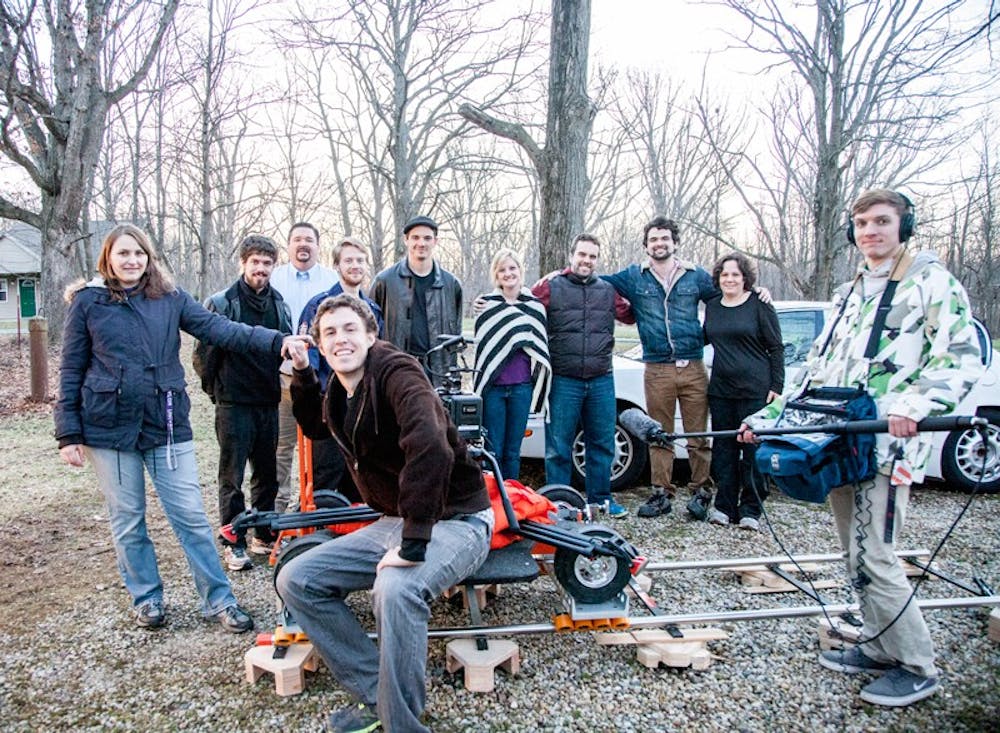
Rob Allen's watch and jewelry shop in Upland has been turned into a bank, and it is being invaded. Masked bank robbers in ill-fitting ski masks jump the counter, demanding cash from the frightened workers. People scream. Shots are fired.
"But never where they're supposed to be fired," says actor and senior Thatcher Ritz with a grin.
The film is "Chasing Petunias," and it is about a man named Jim Meyers. Jim lives in a town where nothing happens. When Jim witnesses a murder and is seen by the perpetrators, however, he is thrust into adventure. No one believes him, not even the police. The cops give him him a ski mask and put him in the local witness protection program, and from there Jim unwittingly gets caught up in a bank robbery, kidnapping and the resulting rescue mission.
"He's always in the wrong place at the wrong time," says sophomore Tommy Weber, who plays Jim. It's a new experience for Weber. Involved in Taylor's theatre program, this is his first time acting on-screen.
"I've been craving something interesting to do, and I have to say this is exciting," Weber says.
Jimmy Vander Galien is the director, with Patrick Macnider as editor and Claire Truman as producer. They have faced many production problems, from missing pieces of equipment to police showing up from neighborhood calls of "criminal activity."
"On our second shoot out in the field, it was the epitome of raining cats and dogs and yet we took out the most equipment we ever took out that night-that film shoot went from 8 p.m. to 5 a.m. the next morning," Truman says. "All through the night we battled the wind, rain, cold, exhaustion and making sure the equipment was safe from the elements."
But for Truman the hardest shoots were the most rewarding. Cast and crew grew closer as they faced challenges together. The experiences also gave Truman the opportunity to show the hard work of narrative filmmaking.
"Yes, it's fun. Yes, you get to do crazy stuff . . . But it's not easy," Truman says. "Filmmaking is one of those industries where someone can't have only creative skills or only technical skills-it's the combination of both and the dedication to telling a good story that makes what we see on the big screen come to life."
"Little Dreams"
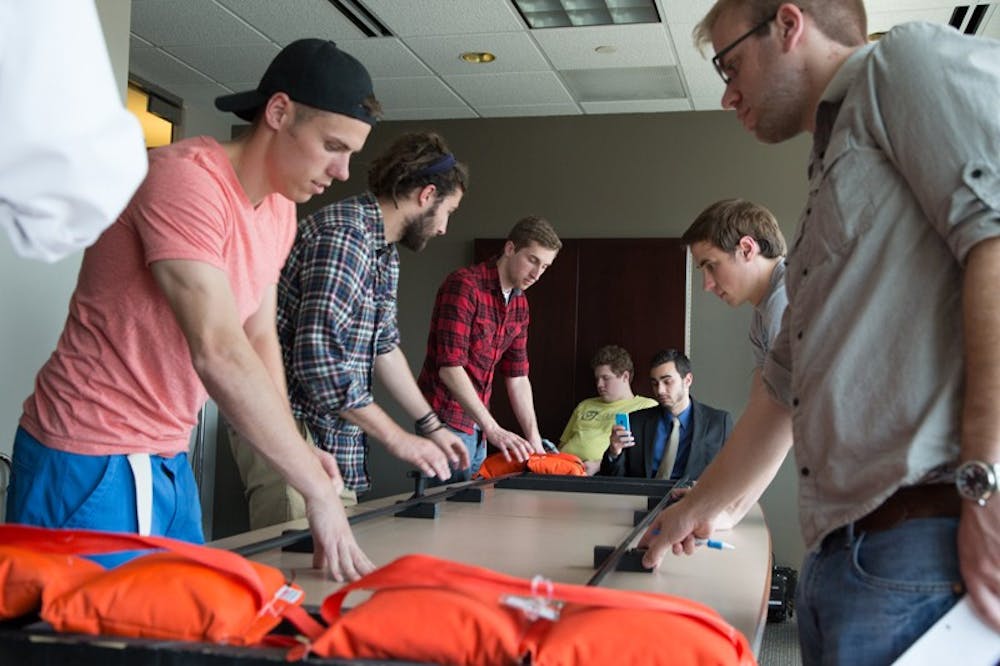
Micah Hancock and Nick Chamberlain have nothing to prove. After winning the Best Drama award at their first Envision festival with the film "Broken," the team went on to gather local film awards for the ambitious "MovieMe" and the Envision festival's Best Visual Effects and Cinematography award for "The White Chalk." But they feel that their best work is this, their final film together before graduating: "Little Dreams."
The film has Chamberlain as cinematographer and Hancock as producer, with Kevin Schillinger directing and Jordan Miller editing. "Little Dreams" is the story of Mark (played by Sean Taylor) and his daughter (played by eight-year-old Maria Wood). Mark is a businessman who spends the last day with his daughter before she moves away with her mother. After adventures at a park and a fun center, he is faced with a dilemma. Mark has two dreams: getting a great job and living a life with his daughter. Which one, ultimately, will he choose?
The group's previous projects have been heavily visual works with glimpses of deeper themes. "Little Dreams" does have the usual trademarks: there is use of green screen, inventive use of film gels for passing headlights and creative camera angles. But the story is the most important part.
"This has the best ending of all our films, that's for sure," Chamberlain says with confidence. "I think it's our best work, too. The last five minutes of the movie will move you."
Filming many of the scenes, especially in the park and fun center, were the best parts of production for the group. "We filled up the Escapades Family Fun Center (in Muncie)," Hancock says. "The staff was great; they closed down the building and let us film where we wanted." Shooting on the third level of the play tubes and in ball pits created a fun atmosphere, complete with musical interludes.
The filmmaking process for all the narrative projects took over two weeks, and one 45-second green-screen car shot took a whole day to film for "Little Dreams". But shooting time is nothing compared to the lasting impact Hancock, Chamberlain and the rest of the crew are confident their film will make.(Thumbnail photograph by Annessa Mosier)

